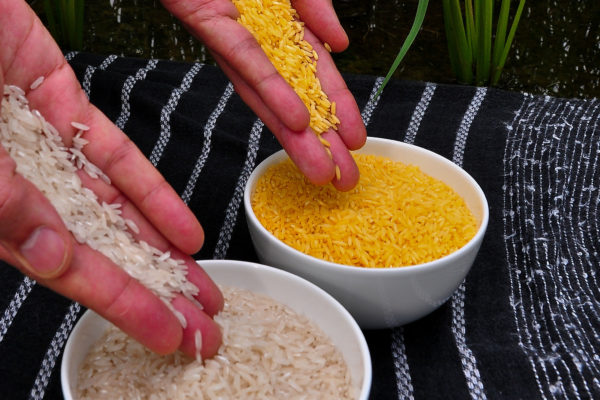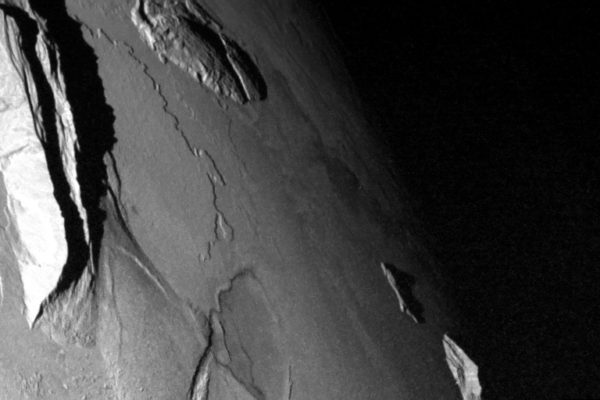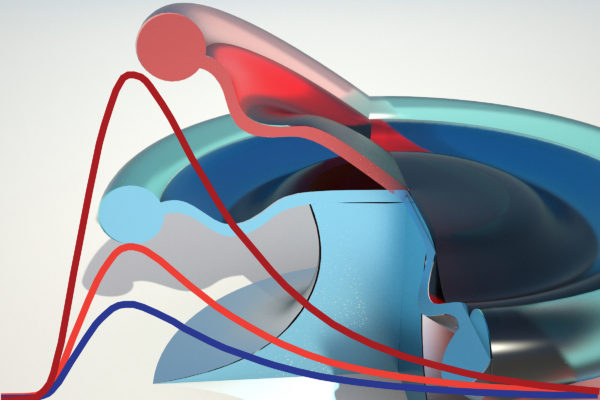Wandering ice on Mars
Glaciations on Mars are different from those on Earth. During a Martian glacial period, water vapor that would otherwise travel to the north polar cap instead snows out at lower latitudes, where ice then accumulates. Radargrams of the north polar region of Mars record the most recent mid-latitude Martian glacial period and the regrowth of the polar ice since then.
Five-cent chemistry
The research team of Liviu Mirica, associate professor of chemistry in Arts & Sciences, has developed novel methods for generating the buildings blocks of important compounds with the common metal nickel. The work expands scientists’ toolbox for nickel-based chemistry, and contributes to the movement of “green chemistry” toward a 21st century of sustainable synthesis.
Pluto: A cosmic lava lamp
Using computer models, New Horizons team members have been able to determine the depth of the layer of solid nitrogen ice within Pluto’s distinctive “heart” feature — a large plain informally known as Sputnik Planum — and how fast that ice is flowing. “For the first time, we can really determine what these strange welts of the icy surface of Pluto really are,” said William B. McKinnon, who led the study.
Study: Golden Rice falls short of life-saving promises
Heralded on the cover of Time magazine in 2000 as a genetically modified (GMO) crop with the potential to save millions of lives in the Third World, Golden Rice is still years away from field introduction and even then, may fall short of lofty health benefits still cited regularly by GMO advocates, suggests a new study from Washington University in St. Louis.
Using 3-D mathematical patterns to track childbirth contractions
By studying the electric activity that causes uterine contractions in pregnant women, researchers at Washington University in St. Louis and their collaborators have developed a multiscale model they believe may aid in predicting preterm birth.
How did cardinals get those bright red feathers?
Researchers at Washington University School of Medicine in St. Louis and colleagues have discovered the gene that produces the brilliant red color in male birds that is so attractive to females. The study is published online May 19 in Current Biology.
Squeezing out mountains, mathematically, on Jupiter’s moon Io
The odd-looking mountains on Jupiter’s innermost moon, Io, are made by a tectonic process unique to Io (and maybe the early Earth), suggests a numerical experiment by two scientists, including Washington University’s Bill McKinnon.
Using nighttime air chemistry to track ozone impact
St. Louis’ hazy summers can sometimes be too hot to handle for people with respiratory issues; increased ozone levels can make the air tough to breathe. A team of engineers at Washington University collaborated on a study of St. Louis’ late-summer air quality. They found that naturally occurring compounds processed in the night sky can have a big impact on ozone levels the next day.
Cause and effect, or effect and cause?
A lab at Washington University in St. Louis is one of the first in the world to look at spontaneous emission with an instrument sensitive to the wave rather than the particle nature of light. Because the light is entangled with the atom that emitted it, this kind of detection may provide a way to control the quantum state of the atom.
A new route to chaos
Researchers in the School of Engineering & Applied Science at Washington University in St. Louis have discovered a novel route to encode chaos on light in an optomechanical microresonator system.
Older Stories









